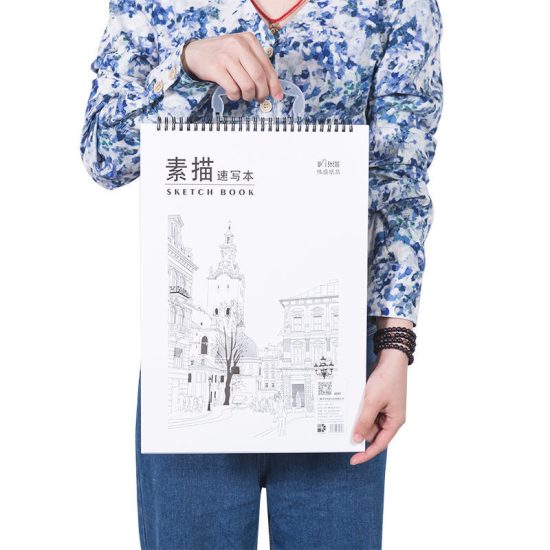Sketchbook therapy, also known as art therapy, utilizes art as a means of relaxation, self-expression, and emotional well-being. It can be a therapeutic practice for individuals looking to relieve stress, process emotions, and promote mental health. Here’s how sketchbook therapy can help you relax:
- Stress Reduction: Engaging in art-making activities, such as sketching in a sketchbook, can help reduce stress levels. The act of focusing on the creative process can divert your attention from daily worries and anxieties, allowing you to enter a state of relaxation and flow.
- Emotional Expression: Art provides a non-verbal outlet for expressing emotions that may be difficult to articulate verbally. Through sketchbook therapy, you can use colors, lines, shapes, and imagery to convey and explore your feelings. This process of emotional expression can be cathartic and provide a sense of release and relief.
- Mindfulness and Presence: When you immerse yourself in sketchbook therapy, you enter a state of mindfulness and presence. By focusing on the present moment and the act of creating, you can achieve a sense of calm and tranquility. Sketching in a sketchbook allows you to tune in to your senses and engage fully with the artistic process.
- Self-Reflection and Insight: Sketchbook therapy encourages self-reflection and introspection. As you sketch, you may uncover underlying emotions, gain insights into your thoughts and experiences, and develop a deeper understanding of yourself. This reflective aspect of sketchbook therapy can contribute to personal growth and self-awareness.
- Self-Care and Nurturing: Devoting time to sketchbook therapy is an act of self-care and self-nurturing. It allows you to prioritize your well-being and engage in a creative practice that brings you joy and relaxation. The act of setting aside dedicated time for sketchbook therapy can help you establish a healthy routine and make self-care a priority in your life.
- Exploration and Playfulness: Sketchbook therapy encourages a spirit of exploration and playfulness. It gives you the freedom to experiment with different art materials, techniques, and subject matter. Embracing a playful mindset allows you to let go of perfectionism and self-judgment, fostering a more relaxed and enjoyable artistic experience.
- Visualization and Positive Imagery: Creating visual representations of positive imagery or desired outcomes in your sketchbook can be a powerful aspect of sketchbook therapy. By visualizing positive scenarios, affirmations, or goals, you can enhance a sense of relaxation and optimism. The act of bringing positive images to life on paper can promote a sense of hope and well-being.
- Community and Connection: Engaging in sketchbook therapy can also provide opportunities for community and connection. Joining art groups, workshops, or online communities can foster a sense of belonging and support. Sharing your sketchbook pages with others can create a sense of connection, inspire creativity, and provide valuable feedback and encouragement.
Remember, sketchbook therapy is a personal and individualized practice. There are no rules or expectations regarding the outcome of your sketches. It’s about engaging in the process and allowing the creative act to bring relaxation and emotional well-being. Embrace sketchbook therapy as a form of self-expression, self-care, and a means to find solace, relaxation, and joy in the artistic process.


